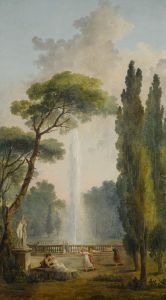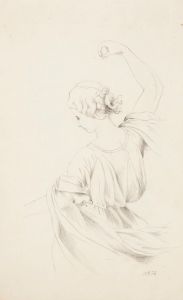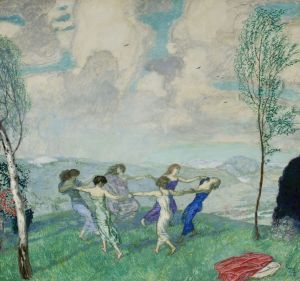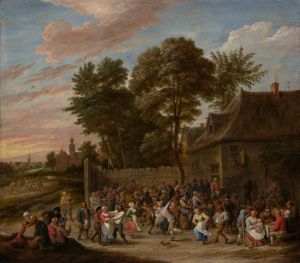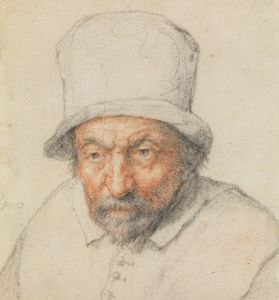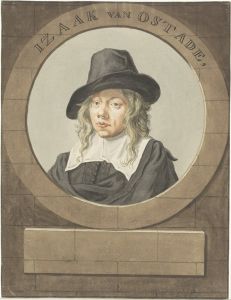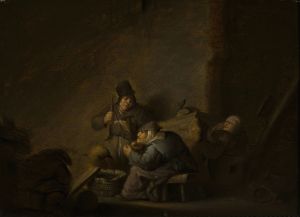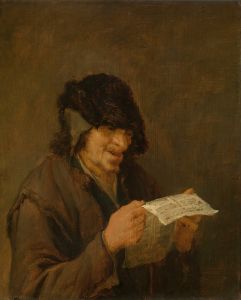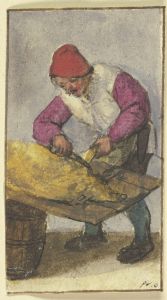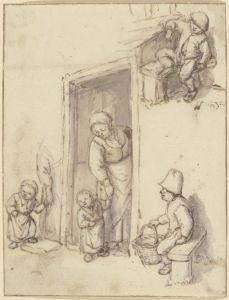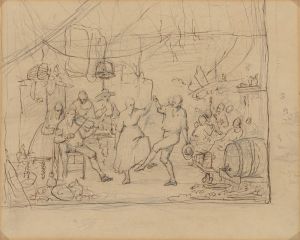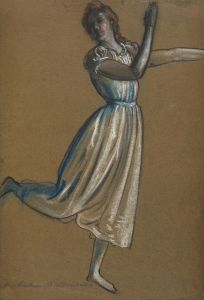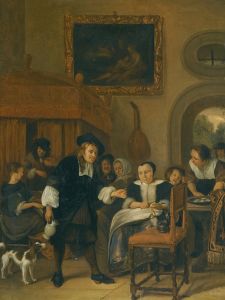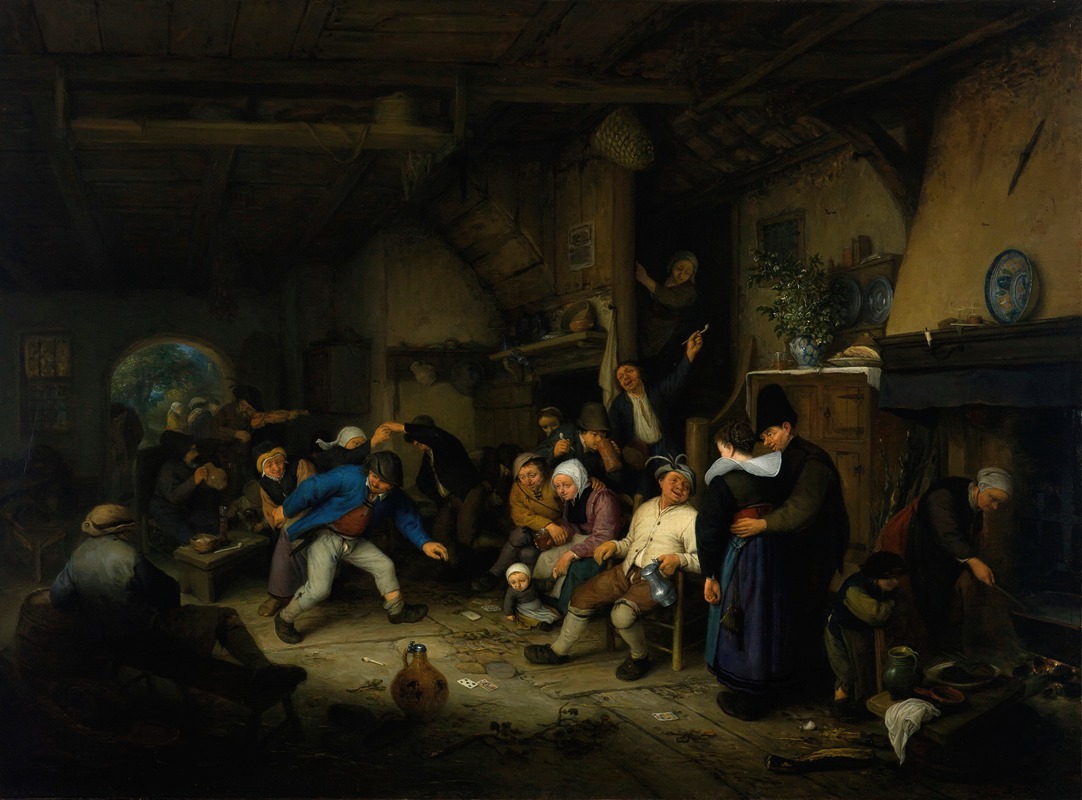
Peasants Dancing in a Tavern
A hand-painted replica of Adriaen van Ostade’s masterpiece Peasants Dancing in a Tavern, meticulously crafted by professional artists to capture the true essence of the original. Each piece is created with museum-quality canvas and rare mineral pigments, carefully painted by experienced artists with delicate brushstrokes and rich, layered colors to perfectly recreate the texture of the original artwork. Unlike machine-printed reproductions, this hand-painted version brings the painting to life, infused with the artist’s emotions and skill in every stroke. Whether for personal collection or home decoration, it instantly elevates the artistic atmosphere of any space.
Adriaen van Ostade was a prominent Dutch Golden Age painter known for his genre scenes depicting peasant life. One of his notable works is "Peasants Dancing in a Tavern," which exemplifies his skill in capturing the lively and often boisterous atmosphere of rural festivities. Van Ostade was born in 1610 in Haarlem, where he spent most of his life and career. He was a student of Frans Hals, a master portraitist, which influenced his ability to render expressive figures and dynamic compositions.
"Peasants Dancing in a Tavern" is a quintessential example of van Ostade's work, showcasing his interest in the daily lives and social activities of the lower classes. The painting typically portrays a group of peasants engaged in merrymaking within the rustic interior of a tavern. The scene is animated with figures dancing, drinking, and playing music, capturing a moment of communal joy and revelry. Van Ostade's attention to detail is evident in the varied expressions and gestures of the figures, as well as in the careful depiction of the tavern's interior, which often includes wooden beams, simple furniture, and rustic decor.
Van Ostade's use of color and light in "Peasants Dancing in a Tavern" contributes to the painting's lively atmosphere. He often employed a warm palette, with earthy tones that reflect the natural materials of the setting and the simple clothing of the peasants. The lighting in his paintings is typically soft and diffused, creating a cozy and intimate ambiance that draws the viewer into the scene. This technique also highlights the textures and details of the figures and their surroundings, enhancing the realism and immediacy of the moment.
The painting is a reflection of the social and cultural context of the Dutch Republic in the 17th century. During this period, there was a growing interest in genre painting, which focused on scenes of everyday life rather than historical or religious subjects. This shift was partly due to the rise of a prosperous middle class that valued art depicting familiar and relatable themes. Van Ostade's work resonated with this audience, as it offered a glimpse into the lives of ordinary people, celebrating their customs and traditions.
"Peasants Dancing in a Tavern" also demonstrates van Ostade's mastery of composition. He often arranged his figures in a circular or triangular formation, creating a sense of movement and interaction among them. This compositional technique guides the viewer's eye through the painting, allowing them to appreciate the various activities and expressions of the characters. The artist's ability to balance detail with overall harmony is a testament to his skill and experience.
Adriaen van Ostade's paintings, including "Peasants Dancing in a Tavern," have been appreciated for their vivid portrayal of peasant life and their technical excellence. His works are housed in major museums and collections around the world, where they continue to be studied and admired for their contribution to the genre painting tradition. Through his art, van Ostade provided a window into the vibrant and often overlooked aspects of 17th-century Dutch society, capturing the spirit and humanity of his subjects with warmth and humor.





